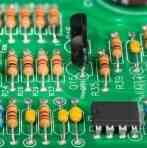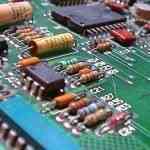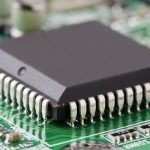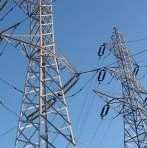Electronics Engineering Articles
 What is Voltage and Current?, What is Active Components and Passive Components?, What is Resistor in Electronics?, What is Inductor in Electronics?, What is Capacitor in Electronics?, Zero Reference Level in Electronics Engineering, Single Mesh and Multi Mesh Network, Rutherford Nuclear Model of Atomic Structure and more…
What is Voltage and Current?, What is Active Components and Passive Components?, What is Resistor in Electronics?, What is Inductor in Electronics?, What is Capacitor in Electronics?, Zero Reference Level in Electronics Engineering, Single Mesh and Multi Mesh Network, Rutherford Nuclear Model of Atomic Structure and more…
Electrical Power Engineering Articles
 Refrigeration Cycle Diagram, Explain Vapour Compression Refrigeration System, Explain Vapour Absorption Refrigeration System, Thermoelectric Refrigeration System Working, Compound or Multi Stage Vapour Compression Refrigeration System, Domestic Refrigerator Working Principle and Construction, Different Types of Electric Heating and more…
Refrigeration Cycle Diagram, Explain Vapour Compression Refrigeration System, Explain Vapour Absorption Refrigeration System, Thermoelectric Refrigeration System Working, Compound or Multi Stage Vapour Compression Refrigeration System, Domestic Refrigerator Working Principle and Construction, Different Types of Electric Heating and more…
Circuits and Networks Articles
 Electric Voltage, Current Definition, Power and Energy Formula, Basic Components of Electric Circuit, SI Unit of Electrical Resistance, Inductance Formula, Capacitance Formula, Voltage Source and Current Source, KVL Law, Voltage Divider Circuit Diagram, Kirchhoff’s Current Law Definition, Current Divider Equation and more…
Electric Voltage, Current Definition, Power and Energy Formula, Basic Components of Electric Circuit, SI Unit of Electrical Resistance, Inductance Formula, Capacitance Formula, Voltage Source and Current Source, KVL Law, Voltage Divider Circuit Diagram, Kirchhoff’s Current Law Definition, Current Divider Equation and more…
Electrical Machines Articles
 Electric Generator Diagram, Types of Rotating Electric Machine, Recent Trends in Electric Machines, Magnetic Field Equation, BH Curve Relationship of Ferromagnetic Material, Magnetic Circuit Calculations, Magnetic Properties of Materials, Magnetically Induced Emf and Force, Principle of Induction Motor, Self Excited DC Generator and more…
Electric Generator Diagram, Types of Rotating Electric Machine, Recent Trends in Electric Machines, Magnetic Field Equation, BH Curve Relationship of Ferromagnetic Material, Magnetic Circuit Calculations, Magnetic Properties of Materials, Magnetically Induced Emf and Force, Principle of Induction Motor, Self Excited DC Generator and more…
Electronic Communication Articles
 Principles of Communication Systems, Need of Modulation in Communication System, Bandwidth Requirement in Communication System, External Noise in Communication System, Internal Noise in Communication System, Noise Calculation in Electronic Communication System, Noise Figure in Communication System and more…
Principles of Communication Systems, Need of Modulation in Communication System, Bandwidth Requirement in Communication System, External Noise in Communication System, Internal Noise in Communication System, Noise Calculation in Electronic Communication System, Noise Figure in Communication System and more…
Electronic Devices and Circuits Articles
 Introduction to Semiconductor Materials and Devices, Conduction in Solids, Conductor Semiconductor and Insulator, P Type and N Type Semiconductor, PN Junction Semiconductor, Reverse Bias PN Junction, PN Junction Forward Bias, PN Junction Diode Working Principle, Forward and Reverse Bias Characteristics of Diode and more…
Introduction to Semiconductor Materials and Devices, Conduction in Solids, Conductor Semiconductor and Insulator, P Type and N Type Semiconductor, PN Junction Semiconductor, Reverse Bias PN Junction, PN Junction Forward Bias, PN Junction Diode Working Principle, Forward and Reverse Bias Characteristics of Diode and more…
Electronic Instrumentation Articles
 Introduction to Electronics Instrumentation, Static Characteristics of Measuring Instruments, Errors in Measurement, Types of Static Error and Sources of Error, Dynamic Characteristics in Qualities of Measurement, Statistical Analysis of Measurement Data, Different Types of Standards of Measurement, Frequency Selective Wave Analyzer and more…
Introduction to Electronics Instrumentation, Static Characteristics of Measuring Instruments, Errors in Measurement, Types of Static Error and Sources of Error, Dynamic Characteristics in Qualities of Measurement, Statistical Analysis of Measurement Data, Different Types of Standards of Measurement, Frequency Selective Wave Analyzer and more…
High Voltage Engineering Articles
 Electric Field Stress, Breakdown in Liquid Dielectrics, Solid Dielectric Materials and Composites Materials, Electric Stress Control, Electric Field Equation, Charge Simulation Method for Electric Field, Boundary Element Method in Electric Field, Advantages and Disadvantages of Various Numerical Methods, Surge Voltage and more…
Electric Field Stress, Breakdown in Liquid Dielectrics, Solid Dielectric Materials and Composites Materials, Electric Stress Control, Electric Field Equation, Charge Simulation Method for Electric Field, Boundary Element Method in Electric Field, Advantages and Disadvantages of Various Numerical Methods, Surge Voltage and more…
Integrated Circuits Articles
 Basic Planar Process in IC Fabrication, Vapour Phase Epitaxy Process, Molecular Beam Epitaxy Process, Oxidation in IC Fabrication, Lithography Process in IC Fabrication, Reactive Plasma Etching, Diffusion Process in IC Fabrication, Ion Implantation Process in IC Fabrication, Metallization Process, IC Packaging Process, Fabrication of Monolithic IC and more…
Basic Planar Process in IC Fabrication, Vapour Phase Epitaxy Process, Molecular Beam Epitaxy Process, Oxidation in IC Fabrication, Lithography Process in IC Fabrication, Reactive Plasma Etching, Diffusion Process in IC Fabrication, Ion Implantation Process in IC Fabrication, Metallization Process, IC Packaging Process, Fabrication of Monolithic IC and more…
Electric Drives Articles
 Braking of Induction Motor, Braking of Synchronous Motor, Starting Method of Induction Motor, Dynamic Electric, Classification of Electric Drive, Basic Elements of Electric Drive, Dynamic Conditions of a SystemDrive, Transient stability in Electrical Drives, Electric Converter, Methods of Controlling Chopper Circuit and more…
Braking of Induction Motor, Braking of Synchronous Motor, Starting Method of Induction Motor, Dynamic Electric, Classification of Electric Drive, Basic Elements of Electric Drive, Dynamic Conditions of a SystemDrive, Transient stability in Electrical Drives, Electric Converter, Methods of Controlling Chopper Circuit and more…
Fundamentals of Electrical Drives Articles
 Electric Drive Motor, Types of Electrical Drives, Choice of Electrical Drives, Torque Equation of Motor Load System, Four Quadrant Operation of Motor Drive, Motor Design Parameters, Components of Load Torques, Selection of Motor Power Rating and more…
Electric Drive Motor, Types of Electrical Drives, Choice of Electrical Drives, Torque Equation of Motor Load System, Four Quadrant Operation of Motor Drive, Motor Design Parameters, Components of Load Torques, Selection of Motor Power Rating and more…
Microprocessors and Microcontrollers Articles
 8085 Pin Diagram, 8086 Pin Diagram, 8087 Pin Diagram, 8088 Pin Diagram, 8089 Pin Diagram, 8251 Pin Diagram, 8255 Pin Diagram, 8257 Pin Diagram, 8279 Pin Diagram, 80186 Pin Diagram, 80286 Pin Diagram, 80386 Pin Diagram, 80486 Pin Diagram, 80287 Pin Diagram, Sample and Hold Circuit, Sensors and Transducers and more…
8085 Pin Diagram, 8086 Pin Diagram, 8087 Pin Diagram, 8088 Pin Diagram, 8089 Pin Diagram, 8251 Pin Diagram, 8255 Pin Diagram, 8257 Pin Diagram, 8279 Pin Diagram, 80186 Pin Diagram, 80286 Pin Diagram, 80386 Pin Diagram, 80486 Pin Diagram, 80287 Pin Diagram, Sample and Hold Circuit, Sensors and Transducers and more…
Modern Power System Articles
 Introduction, Diversity Factor in Power System, Load Forecasting Techniques in Power System, Structure of Power Systems, Thermal Power Station and Coal Based Thermal Power Plant, Cogeneration Power Plant and Topping and Bottoming Cycle in Cogeneration, Working Principle of Combined Cycle Gas Turbine Power Plant and more…
Introduction, Diversity Factor in Power System, Load Forecasting Techniques in Power System, Structure of Power Systems, Thermal Power Station and Coal Based Thermal Power Plant, Cogeneration Power Plant and Topping and Bottoming Cycle in Cogeneration, Working Principle of Combined Cycle Gas Turbine Power Plant and more…
Network Analysis and Synthesis Articles
 Network Terminology, Classification of Electrical Network, Circuit Elements, Types of Energy Sources, AC Fundamentals, Delta to Star Conversion and Star to Delta Conversion, Cramer Rule, Source Transformation Technique, Loop Analysis with Current Source, Nodal analysis, Frequency Domain Network Function, Ladder Network Circuit Analysis and more…
Network Terminology, Classification of Electrical Network, Circuit Elements, Types of Energy Sources, AC Fundamentals, Delta to Star Conversion and Star to Delta Conversion, Cramer Rule, Source Transformation Technique, Loop Analysis with Current Source, Nodal analysis, Frequency Domain Network Function, Ladder Network Circuit Analysis and more…
Principles of Power System Articles
 Electrical Energy Definition, Different Types of Energy Sources, Unit of Energy, Energy Efficiency Definition, Introduction to Generating Station, Schematic Arrangement of Steam Power Plant, Steam Turbine Efficiency, Hydroelectric Power Station, Diesel Power Plant, Nuclear Power Station, Gas Turbine Power Plant and more…
Electrical Energy Definition, Different Types of Energy Sources, Unit of Energy, Energy Efficiency Definition, Introduction to Generating Station, Schematic Arrangement of Steam Power Plant, Steam Turbine Efficiency, Hydroelectric Power Station, Diesel Power Plant, Nuclear Power Station, Gas Turbine Power Plant and more…
Power System Protection and Switchgear Articles
 Basic Ideas of Protection Relay, Fault Meaning, Zone Protection, Essential Qualities of Protection Systems, Basic Principle of Operation of Protective System, Methods of Discrimination in Power System Protection, Generator Faults, Classification of Relay Testing, Derivation of Single Phase Quantity from Three Phase Systemm and more…
Basic Ideas of Protection Relay, Fault Meaning, Zone Protection, Essential Qualities of Protection Systems, Basic Principle of Operation of Protective System, Methods of Discrimination in Power System Protection, Generator Faults, Classification of Relay Testing, Derivation of Single Phase Quantity from Three Phase Systemm and more…
Power Plant Engineering Articles
 Rankine Cycle (Simple Steam Power Cycle), Reheat Cycle in Steam Power Plant, Regenerative Cycle – Definition, Advantages and Methods, Layout of Modern Coal Power Plant or Steam Power Plant, Site Selection of Steam Power Plant, Super Critical Boiler – Definition, Advantages and types, La Mont Boiler Construction and Working and more…
Rankine Cycle (Simple Steam Power Cycle), Reheat Cycle in Steam Power Plant, Regenerative Cycle – Definition, Advantages and Methods, Layout of Modern Coal Power Plant or Steam Power Plant, Site Selection of Steam Power Plant, Super Critical Boiler – Definition, Advantages and types, La Mont Boiler Construction and Working and more…